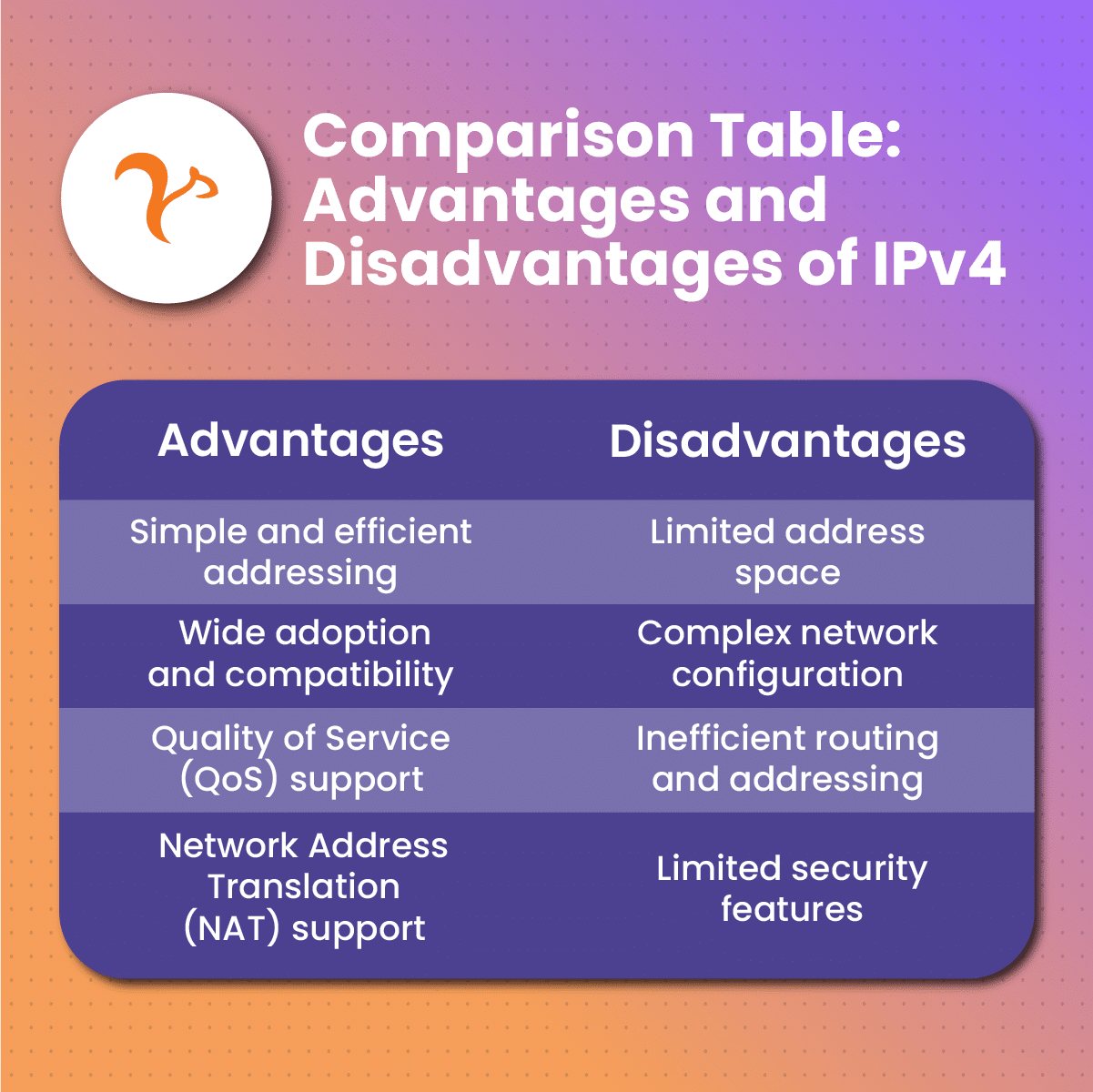What Is IPv4? – Everything You Need To Know About Internet Protocol Version 4
The internet can be an intimidating place if you do not know your way around! However, once you start learning, you will find out that most of the terms you come across, such as Internet Protocol Version 4 (IPv4), are really not that complicated.
You just have to be willing to do a bit of research using a reliable source, and you will soon be updated on the latest changes on the internet. This article will take a closer look at IPv4. By the time you finish reading, you will have all the information you need about this version of the Internet Protocol System.
If you want to learn more about IPv4, or any other internet-related topics, you can visit NetNut today. Here, you will find a host of information about IP addresses, proxy servers, and much more. Let’s learn everything you need to know about IPv4 and the benefits of it.
What Is IPv4?
IPv4, or Internet Protocol Version 4, is the fourth version of the Internet Protocol (IP), which is a set of rules governing the format of data sent over the Internet or other networks. Developed in the early 1980s, IPv4 is the most widely used IP version and serves as the foundation for most of the internet traffic today.
IPv4 uses a 32-bit address scheme allowing for a total of 4.3 billion unique addresses. These addresses are written in decimal format as four sets of numbers separated by periods (e.g., 192.168.1.1). Each of the four numbers can range from 0 to 255. This addressing system is used to identify devices on a network, ensuring that data sent from one device can be accurately routed to the intended recipient.
One of the primary reasons IPv4 became so prevalent is its simplicity and efficiency in assigning addresses and routing data packets across diverse networks. It uses a hierarchical structure that includes network and host identifiers, which helps in efficiently routing data through intermediate routers to reach the final destination.
However, the rapid growth of the internet and the proliferation of connected devices have led to a shortage of available IPv4 addresses. This limitation has driven the development and gradual adoption of IPv6, a new IP version designed to address the address exhaustion problem by providing a vastly larger address space.
Despite its limitations, IPv4 remains a critical component of the internet infrastructure due to its widespread adoption and the substantial investments made in IPv4-based technologies and infrastructure. Transition mechanisms, such as Network Address Translation (NAT) and dual-stack implementation, allow IPv4 and IPv6 to coexist and facilitate the gradual transition to IPv6.
Why Was IPv4 Developed?
Pv4, or Internet Protocol Version 4, was invented to provide a standardized method for devices to communicate over interconnected networks. Developed in the early 1980s by the Internet Engineering Task Force (IETF), IPv4 was designed to address the need for a scalable and robust networking protocol that could support the growing number of computers connecting to networks.
In the early days of networking, various proprietary protocols were used by different organizations, leading to incompatibility issues and inefficient communication between networks. The invention of IPv4 aimed to solve these problems by providing a universal protocol that could be adopted globally, ensuring seamless communication and interoperability across diverse networks.
One of the primary motivations behind the development of IPv4 was to facilitate the growth of the nascent internet. At that time, the internet was transitioning from a small, government-funded research network to a broader, publicly accessible network. The designers of IPv4 needed a protocol that could support the expanding user base and the increasing complexity of network topologies.
Another key reason for IPv4’s invention was to enable efficient and reliable data transmission. IPv4 introduced features such as packet switching, which breaks data into smaller packets for transmission and reassembles them at the destination. This method improves the efficiency of data transfer and ensures that even if some packets are lost or corrupted during transmission, the overall communication remains robust.
Two Main Parts of IPv4
When you send something across the internet, for the delivery to be completed, the package has to reach the right network first, and then the right device (or host). This is why there are two main parts that makeup IPv4, and these are the network part and the host part. The following is a deeper look at each of these:
Network Part
The network part of the IPv4 address is the first part. Consider 192.168.123.132 as an example of an IPv4 address that is used by a device today. The network part of this address, 192.168.123, is the network part. If you are using a proxy server, this number would be different because the package will have to be routed to the intermediary first, before reaching the device network.
Host Part
Using the same example, 192.168.123.132, the last part, 132, is the host part. This will ensure that even if there are multiple devices sharing the same network, for example, when employees are working on a single network, the package will be delivered to its intended destination.
Summary of Features of IPv4
If this is your first time reading about IP addresses, you may find all this information a bit overwhelming. Therefore, before going further, it may help to summarize the important features of IPv4, some of which have already been discussed, while other features will be dealt with shortly. Consider the following:
- The length of an IPv4 address is 32 bits, and it can be represented as either binary, hexadecimal, or dotted-decimal, with the dotted-decimal format being the most common.
- Each IP address is unique, meaning there are no two devices that can ever have the same IP.
- IPv4 addresses are divided into five classes, which are Class A, Class B, Class C, Class D, and Class E.
- Each IP address consists of the network part and the host part, which work together to ensure that each package arrives at the right destination.
- IPv4 has 3 modes of addressing, which are unicast, broadcast, and multicast.
- IPv4 is a connectionless protocol, which works on a best-efforts basis to ensure quick transmission of information.
- A protocol known as DHCP(Dynamic Host Configuration Protocol), can be used to manually assign an IPv4 address.
- Although the system works well for the most part, IPv4 has been known to be unreliable when transmitting packages.
Some Background about the Internet
To help you understand more about IPv4, and how it relates to other factors of internet communication, such as the use of proxies, you will need to go back a little, and look at the background of the internet.
Global internet connection relies on a complex cable connection that runs from one continent to another, sometimes involving giant cables that crisscross the oceans. Without the use of IP addresses, it would be difficult to bring any sort of order to this network of cables and devices.
In this regard, there are only two main things that you need to focus on, and these are the IP address system and the domain name system (DNS).
IP Address
The IP address is used as the primary means of identifying each host, be it a network or a single device. These IP addresses can be either public or private. With a private IP address, you will be able to connect to other devices that are sharing the same network. However, access to the internet will require a public IP address, and this will be provided by your internet service provider (ISP).
Domain Name System
When you access websites on the internet, you do not type in the IP address, yet, somehow, you are always directed to the right page. How does this work, you wonder? Well, this is where the domain name system comes in.
This system can best be described as a global database of domain names (the name of the website that you type in when searching for it) and their IP addresses. The domain name system uses a hierarchy, where each level knows the required answer for the one below it.
Using this intelligent system, you do not have to know the IP address of the host you are searching for. All you need to do is type in the domain name and your computer will get to work searching for the corresponding IP address online.
How Did IPv4 Start?
Have you ever heard of the US Department of Defense’s Advanced Research Projects Agency? Most people know it as ARPANET, and it is the birthplace of IPv4. During its humble beginnings in 1969, ARPANET could only connect four hosts, each with its own specific address used for online communication.
Over time, the network grew, and by 1981, there were 213 hosts connected to the system. However, this growth introduced problems for the network, and it became necessary to link the different networks into a single, inclusive network (the Internet).
This is how the Transmission Control Protocol and Internet Protocol systems were developed, and in 1983, the use of IPv4 became the norm.
What You Need to Know about IPv4 Today
Over time, there have been many improvements made to the IPv4 system. Notably, in 1993, the Classless Inter-Domain Routing (CIDR) was introduced. This was a huge allocation of IPv4 addresses that allowed the use of a suffix that has a number between zero and 32, which shows how many bits represent the network.
CIDR was used to lower the number of unused IPv4 addresses, and this prolonged the life of IPv4. However, it was always deemed as a temporary solution to the looming problem of IPv4 address exhaustion. As more and more people started using the internet, the number of addresses allocated by IPv4 was getting rapidly used up, meaning a better solution would be required.
Different Types of Addressing Modes
As mentioned earlier, IPv4 uses three modes of addressing, which are unicast, broadcast, and multicast. Here is a deeper look into each addressing mode:
Unicast
Using the unicast addressing mode, the data is sent to a single host. This type of communication is only between one sender and one receiver, meaning it is a one-on-one relationship between the two parties. The unicast addressing mode is the most commonly used IPv4 addressing mode and has a destination address field consisting of a 32-bit IP address.
Broadcast
When data is being sent to multiple hosts within a single network, the broadcast addressing mode comes into play. In this case, a Special Broadcast address is used, which is represented by 255.255.255.255. When the client sends data in this way, it will be simultaneously received by all the intended hosts within the network.
Multicast
With multicast addressing modes, the data is sent to a group of hosts, rather than a single host or multiple hosts. In this type of addressing mode there is one sender and a group of destinations, and a special address starting with 224.x.x.x. is used.
Pros and Cons of IPv4
The IPv4 addressing system has been around for many years, and this shows that it was developed as a solid and long-lasting system.
However, despite the many benefits it has, IPv4 also has its drawbacks. This is why there has always been a need to find its successor, which eventually arrived in the form of IPv6. To understand more, here are some of the pros and cons of IPv4:
Pros of IPv4
- IPv4 has been around for many years, and as such, it is supported by all networks.
- The IPv4 addresses are very short, which makes them easy to memorize or write down.
- Setting up and managing your IPv4 network is very easy.
- IPv4 is compatible with any device that uses the internet.
- The coding used in the IPv4 network is flawless.
- IPv4 is a connectionless protocol.
- Routing of IPv4 addresses is something that can be handled easily by any system
- Data encryption in IPv4 ensures that privacy and security are maintained
Cons of IPv4
- If IPv4 is assigned through DHCP, a lot of management of the infrastructure will be required.
- IPv4 is dated, and as such, it is not an adequate system to provide complete protection against the threats brought about by modern technology.
- The vast majority of IPv4 addresses are rooted in the US.
IPv4 Vs. IPv6 – Are There Any Differences?
To overcome the drawbacks of IPv4, mainly the address exhaustion, there was a need to come up with a better version. This is how IPv6 was introduced to replace IPv4. It is important to note that both IPv4 and IPv6 are two excellent technologies, both of which have a major role to play in modern technology.
IPv4 (Internet Protocol Version 4) and IPv6 (Internet Protocol Version 6) are both essential protocols for routing internet traffic, but they differ significantly in several ways. The most notable difference is the size of their address space. IPv4 uses a 32-bit address format, which supports approximately 4.3 billion unique addresses. In contrast, IPv6 uses a 128-bit address format, allowing for about 340 undecillion unique addresses, a necessity due to the exponential growth of internet-connected devices.
Additionally, IPv4 addresses are written in decimal format (e.g., 192.168.1.1), whereas IPv6 addresses are written in hexadecimal format (e.g., 2001:0db8:85a3::8a2e:0370:7334). IPv6 also includes features like Stateless Address Autoconfiguration (SLAAC) for easier network configuration and built-in IPsec for enhanced security. Besides the address space and security improvements, IPv6 simplifies the header structure, which enhances processing efficiency.
IPv4’s more complex, variable-length header can slow down packet processing, whereas IPv6’s fixed-size header is streamlined for faster routing. Fragmentation is handled differently as well; IPv4 allows both routers and hosts to fragment packets, but in IPv6, only the sending host fragments packets, reducing the router’s processing load. Transition mechanisms like dual-stack, tunneling, and translation ensure compatibility between the two protocols during the ongoing transition from IPv4 to IPv6. Overall, IPv6 addresses the limitations of IPv4, providing a more robust, efficient, and secure framework to support the future growth of the internet.
However, the inherent problems of IPv4 cannot be ignored forever, which means that sooner or later, everyone will likely have to switch to the newer IPv6. Here are a few key differences between the two:
- IPv4 uses 32-bit addresses compared to the much larger 128-bit addresses used by IPv6.
- There are a lot more addresses that can be created using IPv6 before the system is exhausted.
- IPv6 can be configured using SLAAC or DHCP6, while IPv4 uses manual DHCP configuration.
- There is no need to rely on NAT translation when using IPv6, as is the case with IPv4.
- IPv4 allows fragmentation, unlike IPv6, which does not.
How Does the Switch to IPv6 Affect You?
Right now, you might be wondering what happened to IPv5. Skipping from IPv4 to IPv6 is not right, is it? Well, IPv5 never became an official protocol.
When the end of IPv4 was drawing nearer, Internet Stream Protocol (which would later be known as IPv5) was developed to help stream video and voice data. A second version of this ISP was also developed, but ultimately, IPv5 was scrapped as a draft, paving the way for IPv6.
As a regular internet user, there is no immediate pressure to switch to IPv6 just yet. This is because, despite its drawbacks, IPv4 is still reliable and capable of handling any day-to-day tasks that you might have.
However, if you wish, you can switch to IPv6 and enjoy a host of benefits, such as the availability of a wider selection of addresses, as well as the possibility of having a faster internet connection.
If you do not run any servers or applications that rely on IPv6, you could simply turn off the system and continue using IPv4 without any problems at all. This is what many people do, meaning you do not have to worry about how IPv6 is replacing IPv4.
How to Find Your IPv4 Address
Google has made many tasks a lot easier to complete, and the same applies to finding your IP address. You can simply type “What is my IP address?” in Google, and it will give you your device’s IPv4 address in less than a second.
Need to Learn More about IPv4? NetNut Can Assist!
There is a lot more that you can still learn about IPv4, how it affects your internet experience, its link with proxy servers and mobile proxies, and the switch to IPv6. The internet is ever-evolving, and you will need a reliable source of information to help you keep up. You can visit NetNut right now, and start learning all you need to know about IPv4.
Frequently Asked Questions About IPv4
How Many Addresses Can IPv4 Support?
The fact that IPv4 only accommodates a 32-bit address is what limits the number of addresses it can support. Additionally, the 32-bit system can only support 4 billion addresses, which might seem like a lot before you consider the number of people on the planet, and the rapid expansion of internet usage. IPv6, on the other hand, has a huge 128-bit capacity, allowing it to support an unimaginable number of IP addresses.
Can You Have Multiple IPv4 Addresses?
Yes, if you are using different devices, or you are connected to two different networks at the same time, it is normal to have different IPv4 addresses. Each host or internet connection needs to have its IPv4 address.
How Do I Know If Two IPv4 Addresses Are on the Same Network?
The first part of the IPv4 address, called the network part, determines which network the device is connected to. That means if you have multiple users sharing the same network, they will all have the same first set of numbers on their IP address.
Simply compare this section of the address to determine which network the host is on. However, the last part of the address, the host part, cannot be the same, even for your devices that are sharing the same network.









